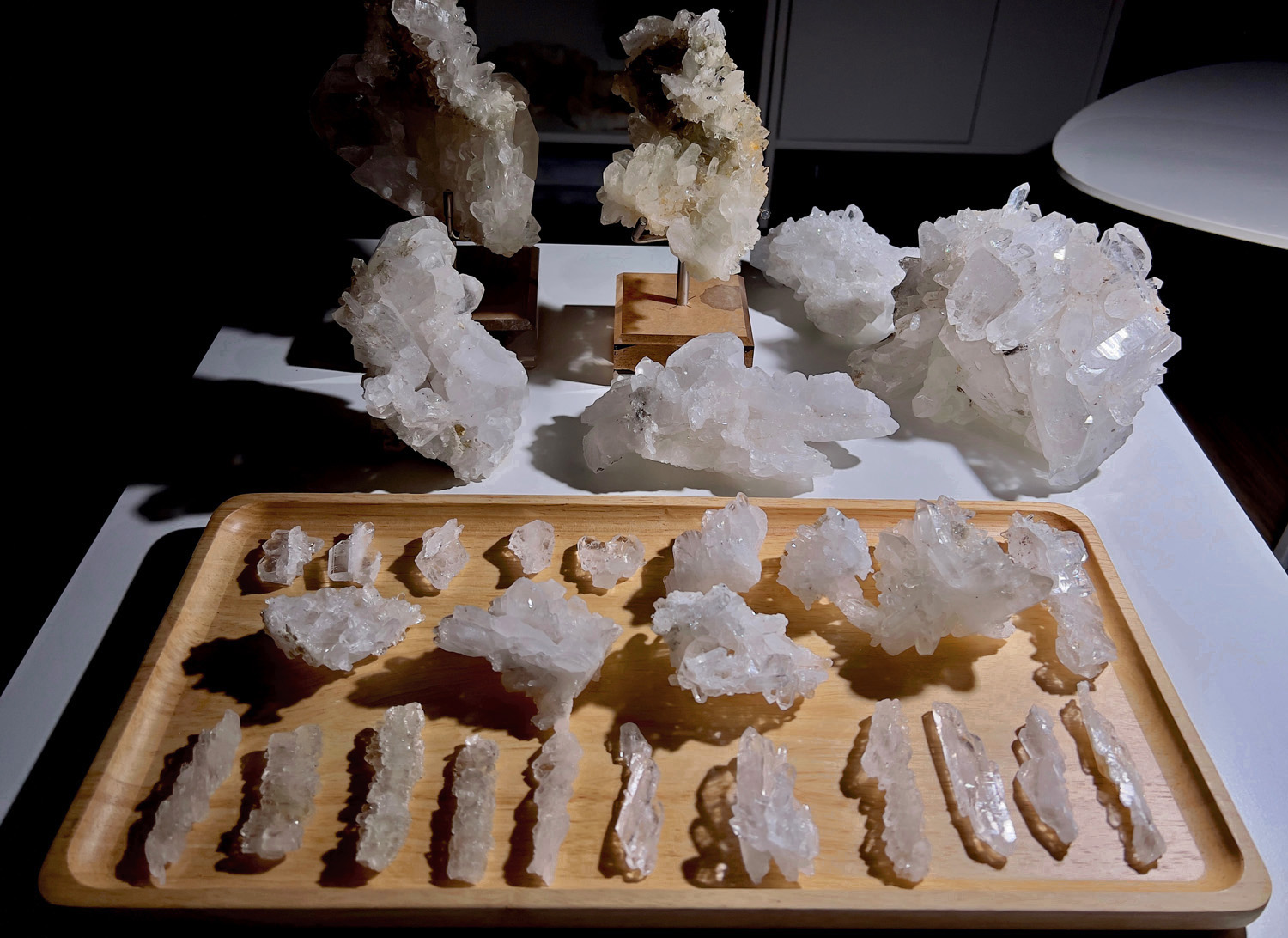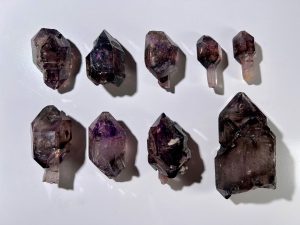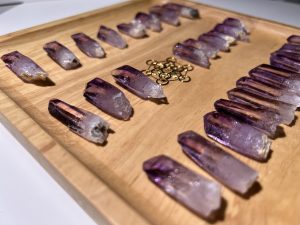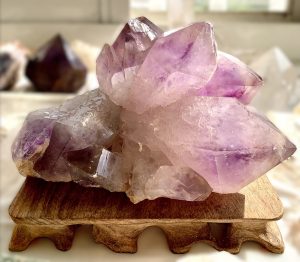Content navigation
The original term “Faden Quartz” comes from German, in which “Faden” (pronounced fah-den) means “thread,” referring to the white line running through the crystal. In the Chinese-speaking world, it is most commonly translated as “縫合水晶” (sewn crystal), though some believe that “sewn” does not fully convey the meaning, and suggest translating it as “縫線水晶” (threaded crystal) instead.
But according to Mindat and the Faden quartz-related papers I have read, it is mentioned that this kind of crystal will constantly break and heal during its formation process. Taking this artistic conception, it is also reasonable to translate it as stitched crystal. For the convenience of universal communication, I still use "stitched crystal" as the main name.
Formation of Faden Quartz
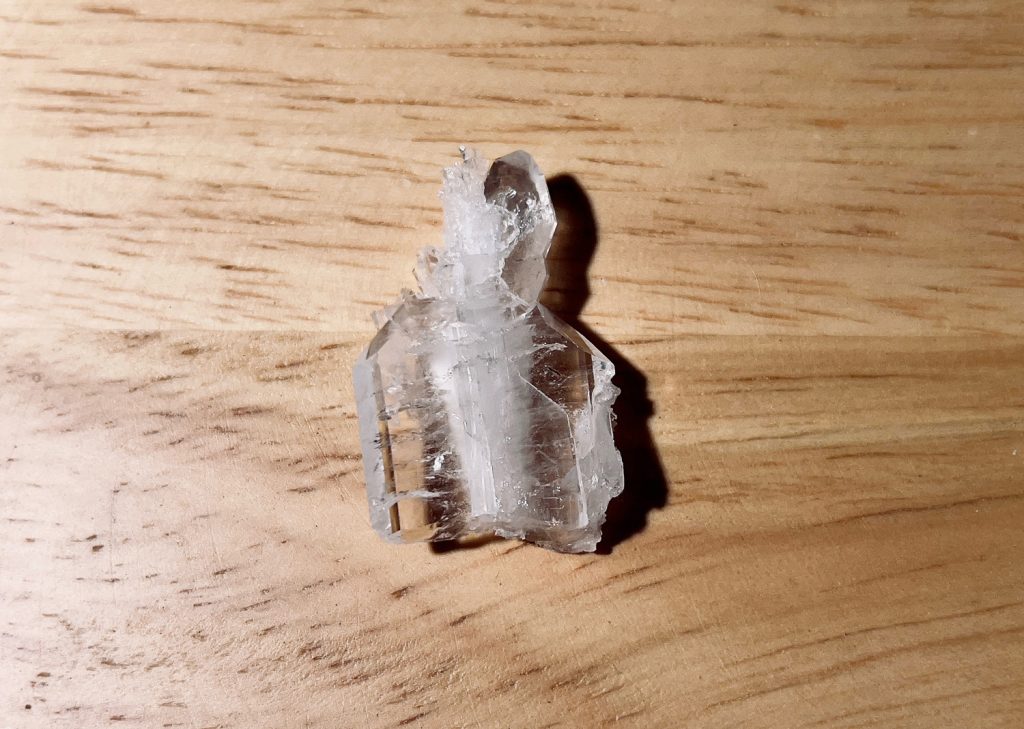
The following is a cross-summary of descriptions from Mindat andthe Journal of Structural Geology article “ Rapid crack-seal growth of Faden quartz,” regarding the possible processes of Faden quartz formation.
Faden quartz forms within fractures in the host rock that expand slowly and steadily. When the fracture opens, quartz crystals in the host rock break apart. In a silica-rich solution, these breaks heal rapidly, forming crystals that attach to the opposite rock wall and span the new fracture. As the fracture continues to widen steadily, the crystals repeatedly break and heal.
These fractures are filled with quartz and capture fluid inclusions, surrounded by laterally deposited quartz formed during later tectonic movements. The repeated breaking and healing leave banded zones of inclusions within the quartz, forming a thread-like white “line” known as the Faden. This thread consists of closely spaced, narrow microfractures (vein-filling deposits). The vein-filling material is formed through a crack-seal mechanism, in which the fracture successively breaks, opens, and is then sealed by quartz deposition.
This line is most distinct in crystals that grow parallel to the rock wall, as quartz crystals generally grow faster along the c-axis (from one end to the other). Such Faden quartz typically appears in tabular form. In contrast, Faden quartz that grows perpendicular to the rock wall, with its termination pointing toward the wall, does not exhibit a tabular form. The Faden line is usually straight, but it can also be curved, jagged, or interrupted depending on the movement of the opposite rock wall.
Despite the above hypotheses, the formation of Faden quartz remains a subject of debate.
Origins of Faden Quartz
According to records, large quantities of high-quality Faden quartz are produced in the Kuar Valley of Afghanistan, the Dera Ismail Khan area of South Waziristan in Pakistan, as well as in the Alps, Himalayas, Ural Mountains, and Arkansas in the United States.
Faden quartz is usually found in partially filled fractures and cavities formed during orogenic processes, known as Alpine-type fissures (Mullis, 1975), which occur in low-temperature metamorphic rocks.
In addition to the thread-like band of central fluid inclusions, Faden quartz is also renowned for its tabular crystal habit and exceptional transparency. Of course, besides the flat, plate-like form, it also occurs in various other shapes. Furthermore, apart from quartz, other minerals with faden structures have been found in the Alpine region, including moonstone, albite, epidote, grossular garnet, and others.
The Faden quartz sold on this site mainly comes from Pakistan. If crystals from other localities become available in the future, this will be noted on the page. It should be emphasized that “Faden quartz” refers to a growth habit rather than the name of a specific type of quartz. Therefore, aside from the localities mentioned above, many other quartz-producing regions may occasionally yield crystals with this formation, which is related to the growth environment of the quartz. However, in the localities listed above, due to mountain activity and unique geological conditions, quartz with the Faden habit can be produced in significant quantities.
The diverse forms of Faden quartz
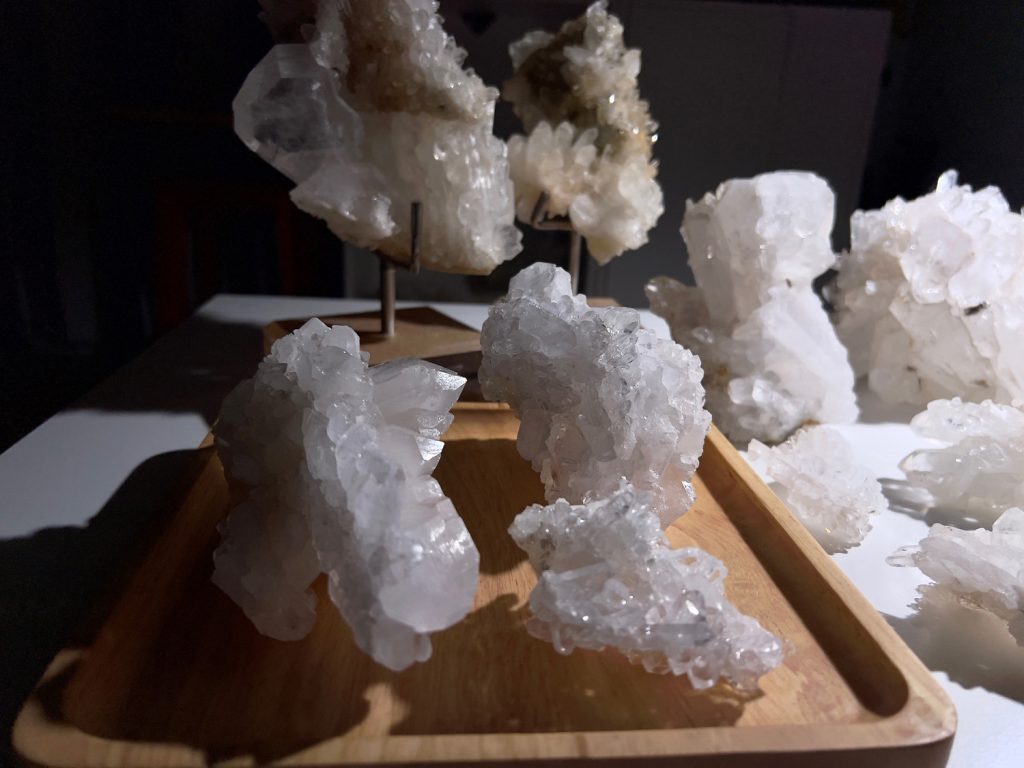
Based on the discussion above, in summary, the appearance of Faden quartz may be related to factors such as the size of the host rock fracture in which it forms and the orientation of the crystal’s c-axis, which in turn gives rise to many different growth habits.
After observing countless Faden quartz specimens, it can be said that their forms are extremely diverse, but they can generally be categorized into several main types. There is the flat, tabular type, usually with the most distinct and classic Faden white line; the slender type, often polycrystalline, with the Faden line sometimes visible; the lace-like stacked form; the multi-faceted clustered type; and the more complex forms resembling quartz clusters, with multiple crystals growing in various orientations.
Possibly due to their growth environment, Faden quartz in flat tabular and slender forms tends to be small in size, whereas in environments that allow for the development of more complex forms, the individual crystals can naturally grow larger.
Aside from flat Faden quartz and some slender types that still have a visible white thread, to be honest, the other more complex forms rarely show it anymore, as it is concealed by crystals growing from multiple angles around it. However, in appearance, you can still sense its effort to “stitch” itself together. In the mineral market, we casually call all of them “Faden quartz clusters.” I often joke, “Hey, your Faden cluster is really well-stitched!”
This is also why I have a unique fondness for Faden quartz. They are among the few that, whenever I see them at a mineral market, I’ll take them home without a second thought—especially the ones with stitching so wild it’s almost crazy.
For those who wish to learn more details related to crystal morphology, you can refer to the following materials, most of which are excerpts from foreign papers and related sources. You may also skip them if you prefer not to read further.
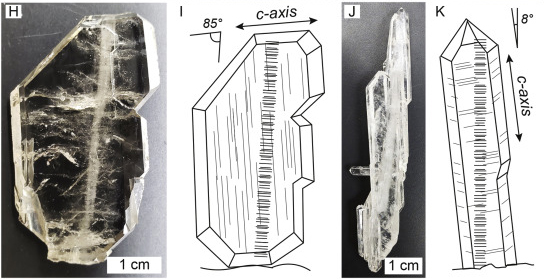
Flat Faden quartz
Many Faden quartz specimens are “flat” or tabular, with all crystals growing in the same plane. These crystals may consist of one or multiple crystals with the same c-axis orientation, and a Faden line runs through approximately the center of the crystal or crystal group. In some cases, multiple flat crystals have different c-axis orientations, and the Faden line may even appear curved, yet the overall appearance is still that of a flat-type Faden quartz.
Slim stitched crystal
A certain percentage of stitch crystals are composed of long, thin, narrow crystals, consisting mainly of a central thread with only a few euhedral crystals surrounding it. These thin crystals can easily have a width-to-length ratio of 1:10.
Lace stitching crystal
Some stitched crystals are like lace, and this shape is also due to its growth environment, which results in lace-like stacking. This is not a specific academic name, but a name given in the mining market based on the appearance, which facilitates communication of the characteristics of the appearance. After all, there is no academic research on various shapes.
Multi-plane aggregation pattern
Multiple crystals grow on different planes and share the same central suture line, or the central suture line spans several small crystals with different c-axis directions. As they move away from the center line, crystals in certain directions become more dominant, forming larger crystals along these directions, and finally present a multi-plane, grape-like aggregate form. But of course there are many beyond the aforementioned classifications. If you take a look at the hundreds of kilograms of sutured crystals in the mine market, you will find that there are many unique looks, perhaps they can be classified in the above-mentioned forms, but each one will make you feel that it looks very different.
Because sometimes they are composed of many crystal clusters that have gone through a process of continuous breaking and healing, and when they are collectively "sewn" together, you will really feel amazed in your heart. Some of them seem to grow in chaos, but in fact they are also growing or being reborn in accordance with the methods mentioned above, with their logic and order.
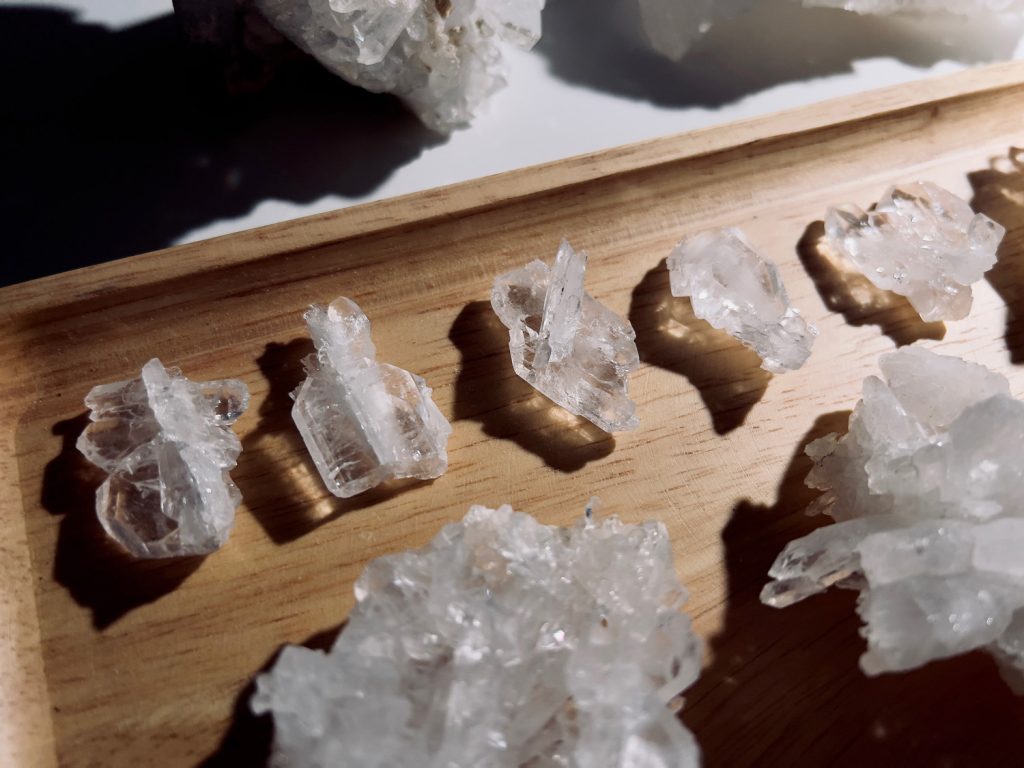
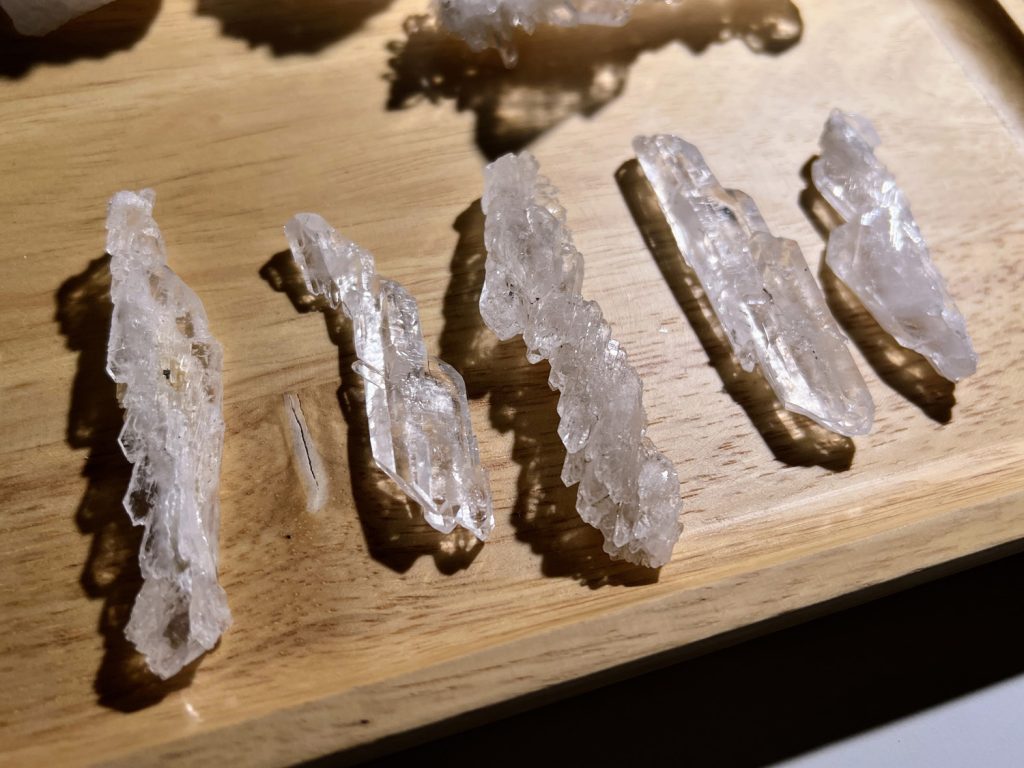
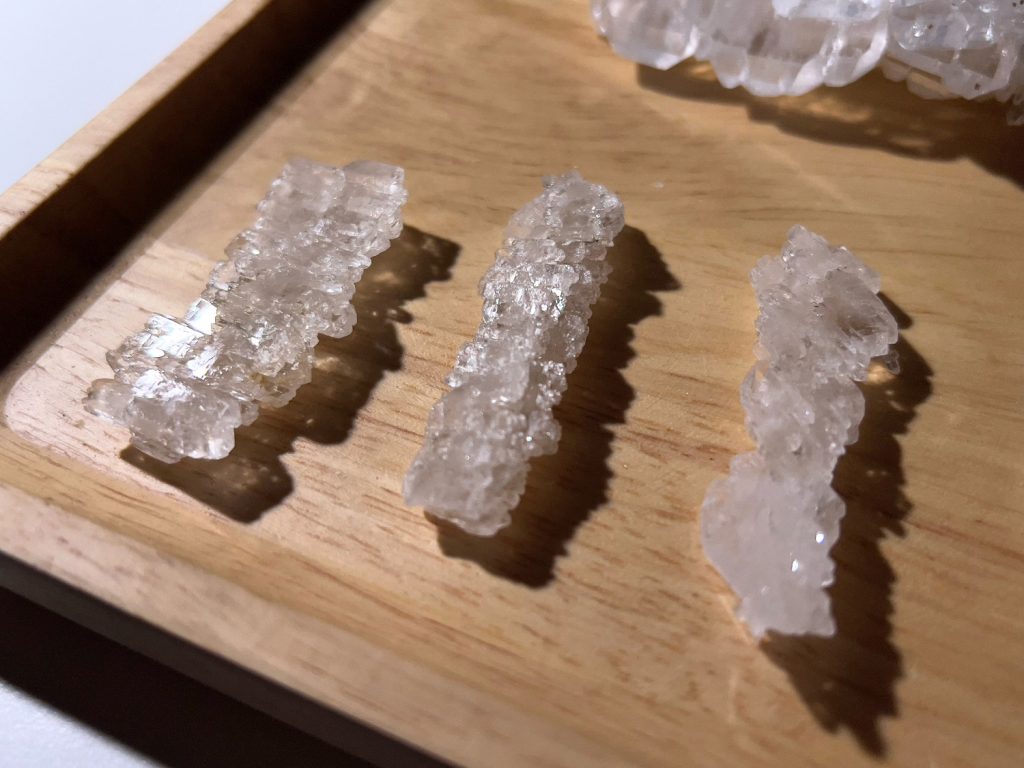
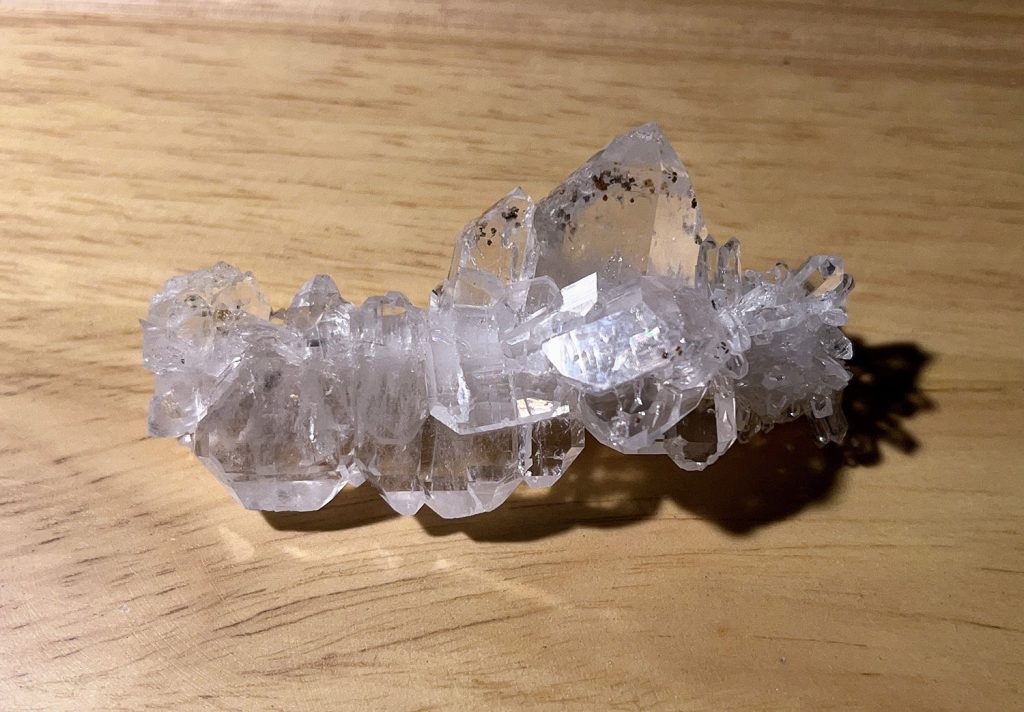
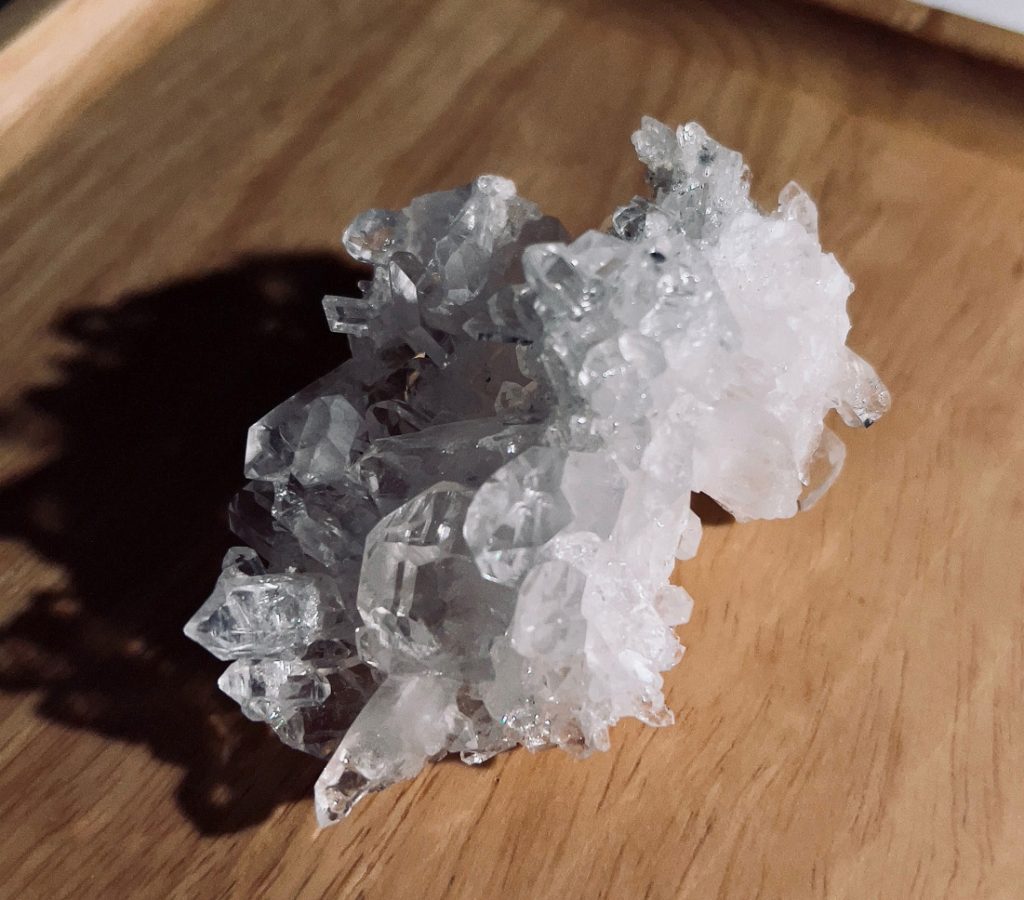
Functional properties of stitched crystals
The healing power of all-pervading
As the name suggests, a crystal that has been broken and healed constantly will definitely extend this ability and quality in terms of energy. It gives me an interesting feeling. Whenever I put it somewhere on my body, even if this crystal weighs several hundred grams, I feel that it immediately merges into the place where I put it. Union is one of its abilities.
One of the main tasks of stitching crystals is to repair the energy field of light that surrounds our body - Aura. This is the word they gave me. Aura can have many translations, but when you speak or read this word, this level of your energy field should resonate.
Regarding this energy field, which is located around our body, it is usually in an elliptical-circular shape. However, there are always various reasons in life that will make this light field incomplete or some people like to say it has holes in it. At this time, sutured crystals can help us completely repair this light energy field; it is much like it heals our light field by regrowing its broken self in the cracks of the parent rock. This is the characteristic of sutured crystals, whether it is at the geological level or the energy level - it will mend the damaged and cracked parts.
In addition, they also mentioned that the etheric field has stronger repair and healing effects, and these can simultaneously drive the vibration and balance of the physical body, and have the ability to stabilize all levels.
Here are two small cases of my own for reference:
(1) I have a small suture crystal that told me it could cure my wisdom tooth problem. I received this information after experiencing slight pain and recurrence for many days. I immediately placed it on the side of my face before sleeping at night. The next day, I felt that most of the inflammation had disappeared. The next day, it continued, and then I was almost healed. I can't say it was a coincidence or not, but there are no coincidences in life.
(2) My cat seldom comes to visit me. When he comes to my bed, it is usually to rest. I put the stitching crystal in the center of his bed. He is very well behaved and has been lying there for about ten minutes. He is already an old cat and his activity level has decreased a lot. He spends most of his time sleeping. Sometimes I have to carry him to the sun or downstairs for a walk. But what happened is that on the day after using the stitching crystal and in the following days, he was very energetic and lively. He would ask to go downstairs to play, and his ability to spray urine was restored. He would also chase the ball. He was really cute. I couldn't help but wonder if this was the result of the stitching crystal healing?
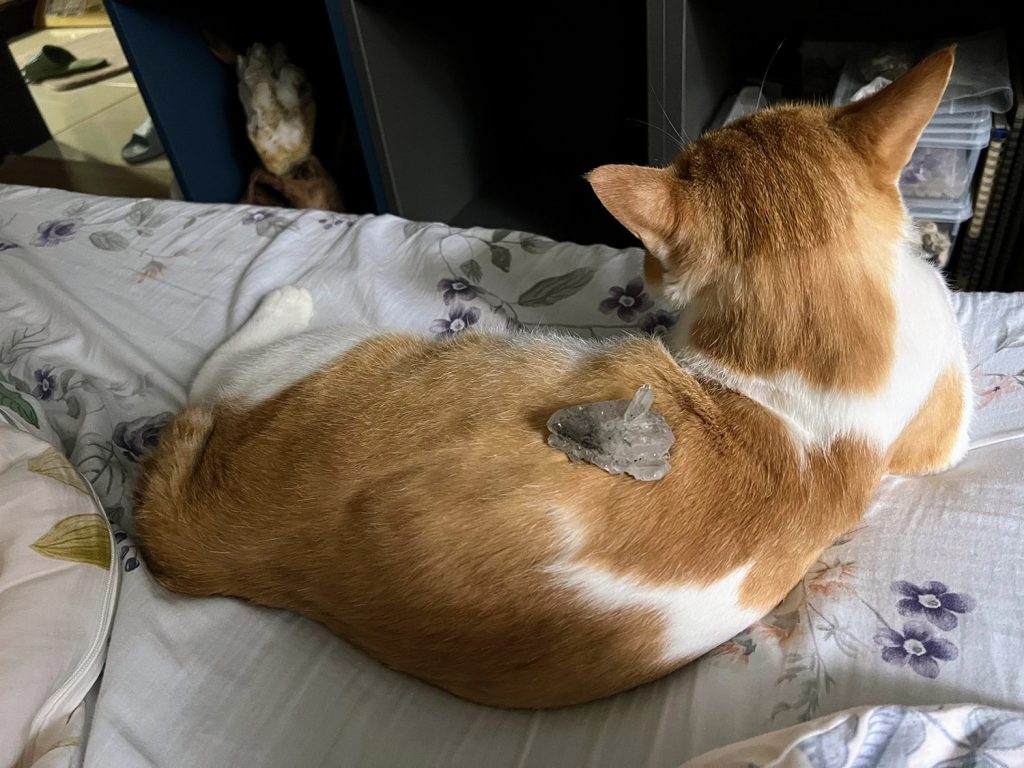
The Protection and Feng Shui Power of Stitched Crystal Clusters
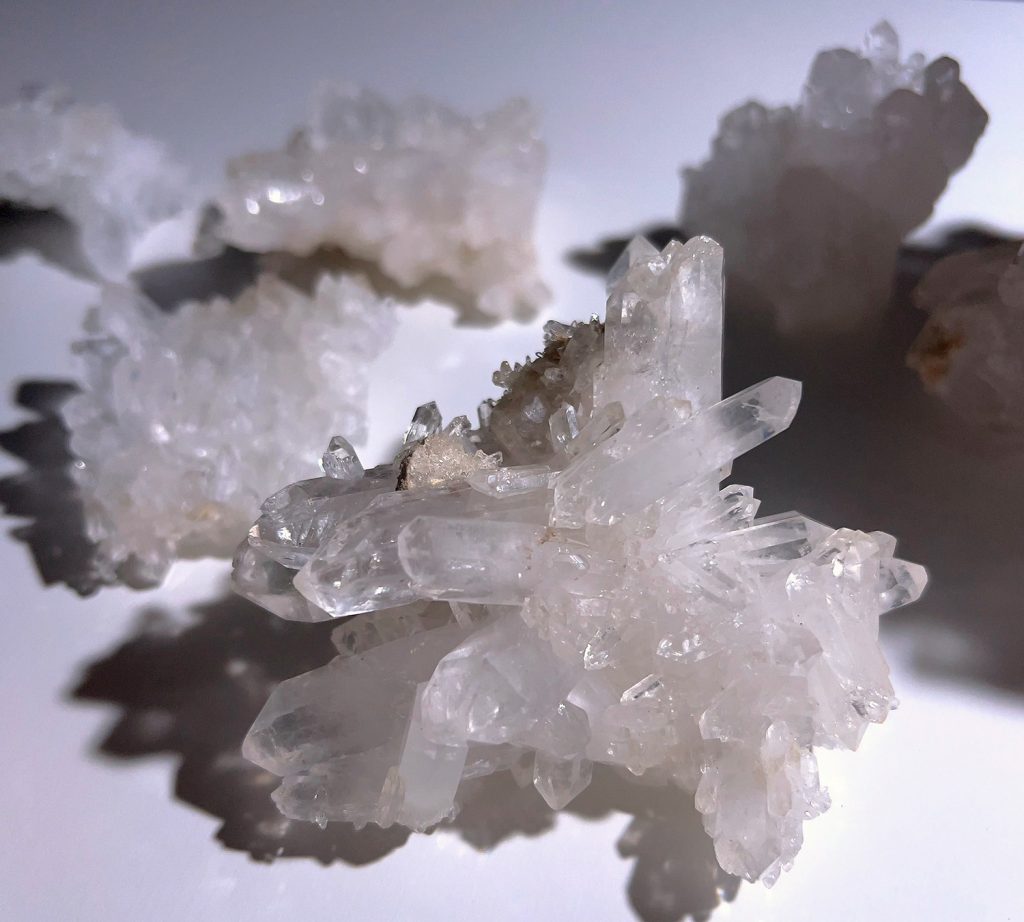
It can also bring us the function of defense and protection, or because of its help to the light field, it can naturally consolidate our field and bring about a defensive effect. Therefore, when this kind of crystal forms a more complex stitched crystal cluster, most of them are used as Feng Shui crystals placed in fixed areas, usually of any size.
I have encountered a very small stitched crystal cluster that most people don't like. It doesn't look exquisite and the "stitches" don't look pleasing to the eye, but it reminded me of its huge energy field and its relationship to me. It is responsible for serving the rotation of abundant energy in the place where I live. Although it is the size that can be held in the palm of your hand, its energy field can be as large as the space of a floor, or even larger.
Some polycrystalline shapes can be used for healing, and can also provide feng shui for the space at the same time. There are dual possibilities, and this depends on your interaction with it to further explore; but in principle, if it exceeds a certain handheld size range, it usually serves the purpose of space.
Robert Simmons also mentioned a little about the function of stitched crystals regarding places or spaces, which will be excerpted in the next paragraph. However, I believe that stitched crystals are not limited to the protection of barriers as mentioned by Robert. I have a collection of many complex stitched crystal clusters, most of which are Feng Shui crystals, and have various different work contents.
To learn more about Feng Shui crystals, read this article:
Wind and Water — Purification and Optimization of Spatial Energy: Elemental Crystals for Space | Feng Shui Crystal Ornaments
The following excerpt is from The Books of Stones
Translator: Lydia
Stitched crystals are one of the premier healing crystals in the quartz family, perhaps because they have been "damaged" (broken and healed) during their growth, they have very powerful healing patterns built into them. Therefore, when a person resonates with this crystal, their own healing abilities are activated and/or enhanced.
Stitched crystals are extremely easy to program, thus increasing their effectiveness as healing stones. If done with focused intent, different crystals can be "programmed" to heal different (physical and mental) ailments. With enough stitched crystals, a healer can create a crystal tool kit for healing applications for almost any vibration.
In addition to their natural healing properties, another advantage of using stitching crystals is that they retain their programming for a long time without having to be recharged. In fact, if you want to change the programming of a stitching crystal, you must first clear the old programming. It is recommended to bury it in the ground for a week, but in most cases, an overnight salt water bath is sufficient.
Most users will find these stones to be exceptionally high in energy, perfect for expanding consciousness and connecting to any higher vibrational plane. They are also great for those who wish to attune to the inner movements of the Earth. Stitched Crystals' experience with past Earth changes makes them an ideal tool for those seeking information about current and future physical and vibrational changes in the Earth. These crystals can also be programmed to provide protection from physical disturbances to individuals and places. For areas, it is best to place at least four crystals at the borders, pointing in four directions. For individuals, Stitched Crystals are most beneficial to carry or wear. Individual crystals can be programmed for a variety of purposes, such as protection, connection to one or more higher planes, chakra activation, and more.
“Stitching crystals and similarly structured crystal forms are powerful allies in closing energetic breaks, leaks, holes, and other breaks in the energy field and physical structure. They can be used to repair the etheric blue layer of the energy field, helping the body and aura regain integrity after an invasion or other disruption. Due to their plate-like structure, stitching crystals can act as a vibrational bandage, allowing energy to flow in both directions through damaged parts of the energy field and body.
Stitching crystals can stimulate the aura and help re-energize it when there is a loss of energy from a leak, hole, attachment, or sudden break in an energy cord (similar to a hole in a tire). By creating this energetic bandage or bridge, stitching crystals can help restore a person’s vibrational level and strength, which is very useful in healing work where stability is needed while the underlying issue is being addressed.”
- Psychic Naisha Ahsian

